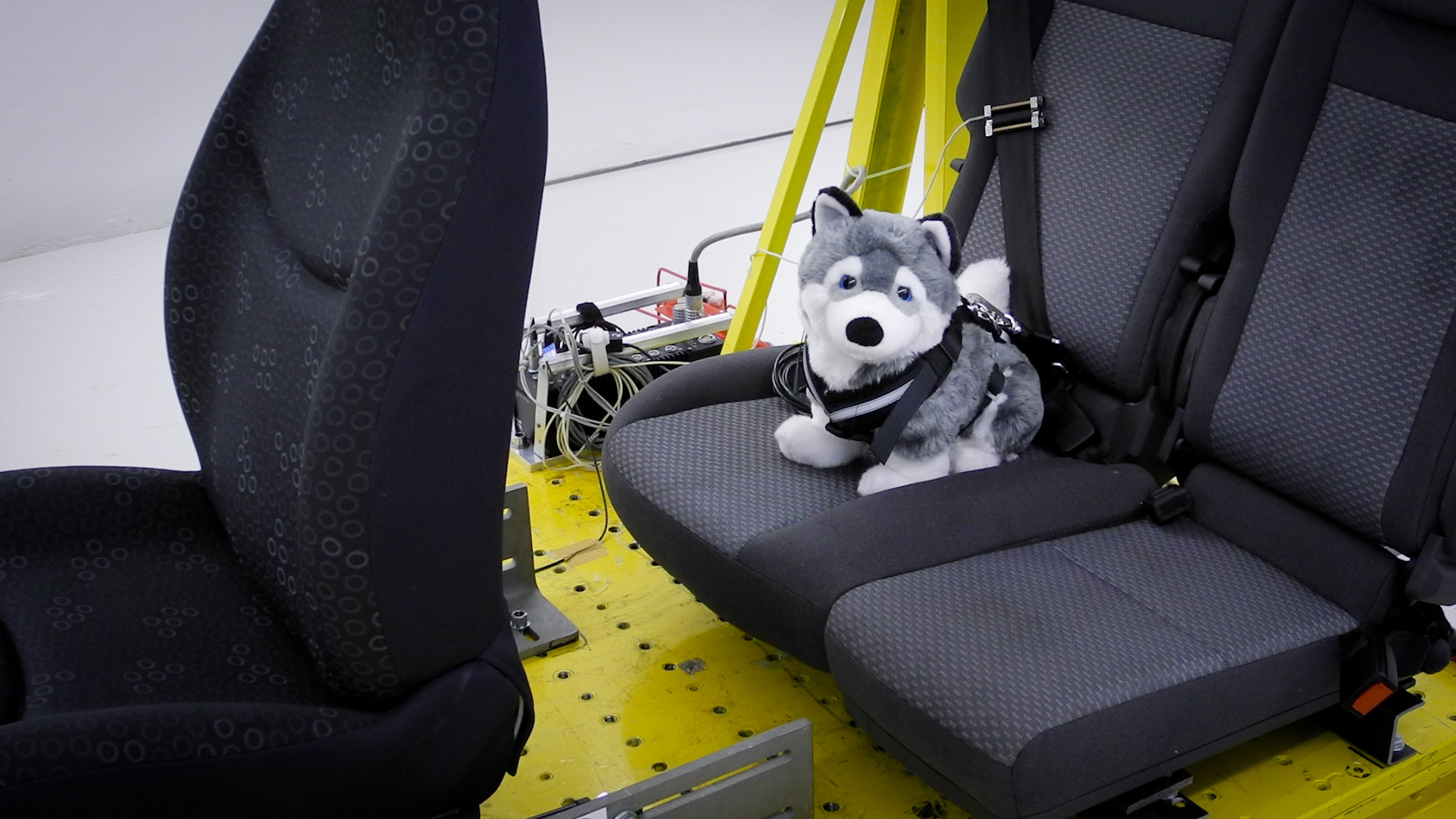Topics at the Allianz Center for Technology:
Securing dogs in the vehicle

One of the test candidates: Dog dummy waiting for his cue
May 2020
As a matter of fact, dogs are regarded as cargo in the sense of the German road traffic regulations and must be secured during the journey. The market offers various systems for this purpose and the Allianz Center for Technology AZT has tested samples for their practical suitability and crash safety using dog dummies. In most cases, the different securing systems are more uncomfortable for the dog owner in terms of handling than for the dog itself.
A safety system not only helps the dog to find a safe and comfortable position in the vehicle during normal driving manoeuvres, but also during emergency braking or evasive manoeuvres. Thus most dogs get used to it quickly to stay more relaxed during the journey. Hence the driver is also less distracted by the dog. An unsecured dog, however, can move freely in the vehicle, cannot find a secure foothold, can obstruct the driver's view and distract him dangerously.
Finally, in the event of an accident, an unsecured dog is not only considerably endangered itself, it also precipitates a serious risk of injury for the occupants due to its mass and the enormous physical forces. After an accident, an unsecured dog in a frightened, possibly injured state, can endanger helpers and other road users. And also a dog trying to protect the owner can become a danger for helpers and car passengers.
The crash tests performed by AZT have impressively shown that dogs must be secured according to their size and weight. Dog owners should consider the following references:
The securing system (whether belt, harness or box) must bear a test certificate for crash safety according to ECE R17.
The securing system must be designed for the weight and size of the dog.
Read and understand the manufacturer's instructions on the safety system and how to use it appropriately.
The safest place for a dog is in a lashed and firmly closed dog transport box in the cargo area.
The box must be secured with suitable lashing straps and must not load the backrest of the rear seat bench during normal operation.
The seat belts of unoccupied rear seats can be additionally fastened in order to absorb loads on the backrest in the event of an accident.
Only smaller dogs up to a maximum mass of 7 kg can be buckled up on the rear seat with special belt and harness systems, because harnesses generally provide too much freedom of movement and can be harmful for the dog due to an excessive jerk when tightened in an accident.
For dogs up to medium weight and size there are crash-proof transport boxes for the rear seats available. These boxes can also be secured with additional straps or even better using Isofix mounts.
Drive carefully and with foresight.
Taking these AZT tips into account, your dog will hopefully be happy to accompany you in the vehicle as long and as safe as possible.
The AZT wishes you and your pet a safe journey!
External video
This video is loaded in a YouTube player. This means that Google collects information about your use of the information provided and uses it for analysis and marketing purposes. However, if you would still like to view this video, you must change the cookie settings.
Open cookie settings